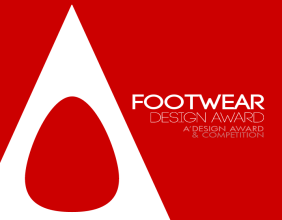Highlights
- Smith & Nephew PLC (SN) embarks on a comprehensive twelve-point turnaround plan
- Activist stakeholder influence and a significant share decline drive urgent operational reforms
- Growth in the US orthopaedic segment and margin enhancements are key focal points
The medical device industry, a critical segment within the global healthcare category, plays a central role in improving patient care through innovative surgical equipment and advanced wound management solutions. Companies such as Smith & Nephew PLC (LON:SN) are renowned for their contributions to this field. Amid technological advancements and stringent regulatory standards, the sector faces constant dynamism. Smith & Nephew is currently under the microscope, as market sentiment has been affected by a prolonged share price decline since pre-pandemic peaks. Recent strategic shifts, led by a detailed twelve-point turnaround plan under the leadership of Chief Executive Deepak Nath, aim to restore operational stability and reinvigorate investor confidence.
Turnaround Strategy and Leadership Initiative
Smith & Nephew's newly articulated twelve-point plan represents a decisive effort to address operational challenges and catalyse growth. The plan focuses on streamlining manufacturing processes, enhancing R&D capabilities, and optimizing product portfolios to better meet market demands. The leadership initiative seeks to improve efficiency across the board, aiming to boost operating margins from previous levels while maintaining stable earnings. The plan includes measures to bolster cost management, modernize legacy systems, and invest in innovation that is expected to have a direct impact on future market performance. This strategic realignment is a clear response to the heightened scrutiny from stakeholders, especially following the noted influence of activist groups such as Cevian, which have called for accelerated corporate governance enhancements.
Activist Influence and Market Sentiment
The role of activist stakeholders in shaping corporate strategy has grown significantly in recent years. In the case of Smith & Nephew, activist investor Cevian's involvement has underscored the urgency of the company's turnaround efforts. The impact is evident in the steep share price decline, which has fallen by over 40% from pre-pandemic levels. This drop has put immense pressure on the company to deliver tangible improvements in both operational performance and financial results. Market participants have responded to the perceived gap between strategic objectives and actual performance, intensifying the focus on implementing cost-cutting measures and improving operational efficiency. The heightened market scrutiny reflects broader concerns regarding the pace of recovery and the effectiveness of the turnaround plan.
Focus on the US Orthopaedic Segment
A critical element of Smith & Nephew's strategy involves capitalizing on growth opportunities in the US orthopaedic segment. This market is viewed as a key driver of future revenue growth, given the strong demand for advanced surgical devices and orthopaedic solutions in the United States. The company has dedicated significant resources to expanding its product offerings and enhancing its technological capabilities in this area. By focusing on innovative solutions that address the evolving needs of the US market, Smith & Nephew aims to capture a larger share of this lucrative segment. The successful execution of growth strategies in the orthopaedic space is expected to positively influence overall financial performance and help reverse the downward trend in share value.
Cost Management and Operational Efficiency
In the current challenging economic environment, effective cost management is essential for maintaining a competitive edge. Smith & Nephew's turnaround plan emphasizes the need to streamline operational processes and reduce inefficiencies across its manufacturing and distribution networks. By optimizing the supply chain and leveraging technological innovations, the company aims to lower production costs and improve profit margins. Enhanced operational efficiency not only boosts financial performance but also increases the company's agility in responding to market fluctuations. This focus on cost reduction is particularly important given the ongoing pressures from rising input costs and the need to deliver value to both consumers and stakeholders.
Regulatory and Technological Challenges
The medical device industry operates under stringent regulatory conditions that necessitate continuous innovation and adherence to high-quality standards. Smith & Nephew faces the dual challenge of meeting regulatory requirements while staying ahead of technological advancements. The turnaround plan incorporates initiatives to upgrade legacy systems and invest in next-generation technologies that can improve product efficacy and safety. These efforts are crucial in ensuring that the company remains compliant with evolving global standards and retains its reputation for quality. In addition, the integration of digital tools and advanced analytics into manufacturing and supply chain operations is expected to enhance decision-making and streamline processes, further driving operational improvements.
Strategic Reallocation and Future Growth Prospects
The strategic reallocation of resources is a central theme in Smith & Nephew's efforts to reinvigorate its business. By shifting focus toward high-growth areas, such as the US orthopaedic segment and advanced digital technologies, the company aims to unlock new revenue streams and improve long-term profitability. This approach involves not only reducing costs in less profitable areas but also investing in innovation that aligns with emerging market trends. The ability to successfully execute these strategic initiatives will be a key determinant of future performance. With an increasing emphasis on sustainable growth and operational agility, Smith & Nephew is positioning itself to capture the opportunities presented by a rapidly changing healthcare landscape.
Market Dynamics and Share Performance
The financial performance of Smith & Nephew is closely watched by market participants, with recent share price movements reflecting the ongoing challenges and potential opportunities faced by the company. The steep decline in share value has intensified scrutiny on the effectiveness of the turnaround plan. Investors and stakeholders are keenly observing whether the strategic initiatives will translate into measurable improvements in revenue and operating margins. Market dynamics in the medical device sector are heavily influenced by broader economic trends, regulatory changes, and technological advancements. In this context, the company’s ability to regain market confidence will largely depend on the successful implementation of its strategic roadmap and its responsiveness to external market pressures.
Innovation in Product Development and Market Expansion
At the heart of Smith & Nephew's strategic plan is a renewed focus on innovation in product development. The company is investing in research and development initiatives aimed at creating advanced surgical equipment and wound management solutions that meet the evolving needs of healthcare providers. This commitment to innovation is expected to drive new product launches and enhance the company's competitive positioning. Moreover, efforts to expand into emerging markets and strengthen global distribution networks are integral to the long-term success of the turnaround strategy. By fostering a culture of innovation and agility, Smith & Nephew aims to differentiate itself from competitors and capitalize on growth opportunities in the global medical device sector.
Smith & Nephew PLC's strategic transformation highlights the challenges and opportunities inherent in the evolving medical device industry. Through a comprehensive turnaround plan that emphasizes operational efficiency, technological innovation, and targeted market expansion, the company is working to restore financial stability and regain investor confidence. As market conditions continue to shift, the ability to effectively manage costs, enhance product offerings, and navigate regulatory challenges will be crucial for securing long-term success in a competitive global landscape.





